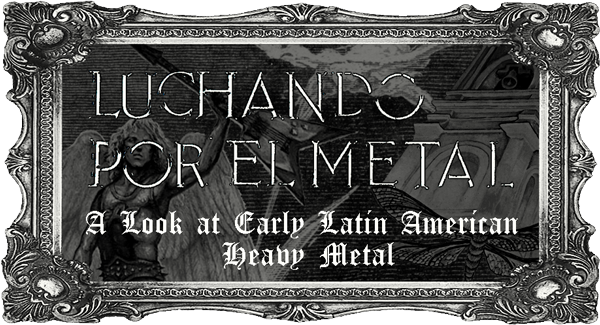All fans of old & underappreciated Heavy Metal and/or curious for some more 'exotic' Steel, rejoice! Yet another essential part has been added to The Corroseum's family of guides to Metals from all corners of the world, this time in the form of a new and updated edition of Luchando por el Metal - A look at early Latinamerican Metal. We bow our heads and raise our fists to Xecotcovach for his excellent work with introducing us to the early years of this exciting scene...
Introducción
An unexpected wealth of rock bands formed all around Latin America during the 60s and 70s, laying the blueprints for heavy metal in the early 80s. Nowadays, every country has seen an explosion of bands, but back then things were a lot harder to come by. These early metal artists pioneered not only a sound in their respective countries, but a true counterculture as well.
In the region's nineteen countries, the 80s saw at least seven different wars, numerous coup d'états, foreign incursions, and numerous military dictatorships (infamous for their brutality), along with high poverty and crime rates. While significant differences between countries exist, the common base for the region is that hundreds of years of European colonization, American imperialism, and a myriad of internal problems such as corruption and racism resulted in weak nations, unscrupulous oligarchies, segregated societies, rampant violence, and poverty.
But on to the main point: This primer examines the early traditional metal scene of most Latin American countries. It is a personal thank you to all those tenacious metal artists and fans who started the scenes in their respective nations. The bands and recordings covered are selected like this:
- For places with large outputs, I'm sticking to material released or recorded before 1985.
- For the more obscure, latecomer scenes, I searched for the earliest bands I could find.
Unfortunately, there's barely a thing to say on most of the bands because it's really hard to find information. This is a key point – due to poor documentation, a lot of information is sadly lost to time. If I missed any bands, it is because I was unaware of them. Nearly all of the artists included here released music in their native tongue – perhaps a factor contributing to their limited exposure to the global metal scene.
Most, if not all of these bands, were often met with disdain. This is worth stressing again: several of these bands were true voices of a counterculture. The very act of playing this "devil's music" was an act of defiance against the hard line conservatism of Latin America. Against the repressive hand of religions and the murderous forces of the state, their lyrics actually meant something – if only for the few people who identified with this music. Several bands and fans faced actual consequences for playing heavy metal. These consequences ranged from murder, venue raids, imprisonment, exile, and beatings. In the large scheme of things, however, metal was just a small part of anything deemed opposition by the state, army, and other criminal groups. So, metal bands and fans were often lumped under categories such as 'cultural subversives' or 'political dissidents,' etc.
There's an intrinsic passion, grit, and authenticity in early Latin American metal that can't be faked. I imagine it can only be the result of the living conditions in these countries. I hope you enjoy discovering it for yourself as you listen to the bands in this writing.
For a quick listening guide, here are two lists of what I consider essential and recommended listening. These lists are only personal opinions based on personal preference and/or perceived historical importance:
Essential albums
- Resistencia - Hecho en Venezuela, Estrategia contra el movimiento
- Arkangel - Arkangel
- V8 - Luchando por el Metal
- Kraken - I
- Luzbel - Metal Caído del Cielo
Recommended albums
- Tarkus - Tarkus
- Stress - Flor Atômica
- Arkangel - Rock Nacional, Represión Latinoamericana
- Gillman - Levántate y Pelea
- V8 - Un Paso Más en la Batalla
- Bloke - Demolición
- Trueno Azul - Mario
- Super Ratón - Sociedad Occidental
- Serpiente Visión - Serpiente Visión
- Khaos - Forjado en Rocka
 COUNTRIES
COUNTRIES
Venezuela - Colombia - Ecuador - Bolivia - Peru - Brazil - Paraguay - Uruguay - Argentina - Chile - Mexico - El Salvador - Guatemala - Honduras - Dominican Republic
INTERVIEWS
Venezuela
Most of the following albums were released by the now defunct label Color. It deserves a mention for supporting heavy metal at such an early stage.
Resistencia
This band was a thing of beauty – a thing of might. Formed in 1977, they were successful in their own country, performing concerts in packed venues and with live TV showings. However they didn't reach the international success they deserved. To this day, they remain criminally underrated outside of their relative region. Part of what makes this band so fantastic is their quality musicianship across all instruments and their wide variety of sounds and lyrical themes, while always maintaining the straight-in-your-face, gritty metal sound in their first two albums. The closest comparisons I can think of are 70s Judas Priest, 70s Rainbow, and maybe early Raven, but Resistencia has a unique sound second to none.
On stage, the band had an energetic presence. Their lyrics were quite diverse and sometimes even esoteric, with topics ranging from social protest to Dio -like prose blending history, occultism, and fantasy. Sadly, two crucial band members, Ricardo Escobar (drums) and Rodrigo Yoma (guitars) died several years ago.
I've got so many things to say about their first album, Hecho en Venezuela, that it's best for you to listen to it. It's got rough and somewhat operatic vocals, interesting song structures, aggressive and galloping riffs, tight musicianship, great melodies… I could go on. Truly one of the best albums in the history of metal (I'm fully aware of the implications of this statement and I stand by it).
Their second album, Estrategia Contra el Movimiento, is pretty much the same as the above, but a lot more progressive – somewhat Rush -like. Estrategia Contra el Movimiento has an even more unique sound than the first album. The band would continue to get more progressive on their third album, Dacapo. They even had concrete plans to perform with a full orchestra for a concept album named Zodiaco.
On this sub-site you will find a new, very special interview with Resistencia's original guitarist and of the few surviving members, Marco Ciargo. This is one of very few interviews with Resistencia available online, and possibly one of only two ever done in English.
Arkangel
Starting out in 1978 as the hard rock band Power Age, they changed to a more heavy metal-oriented sound in 1981 and are still active today, having gone through a few changes through the decades. The only original members still active are the Picozzi brothers on drums and guitar.
-
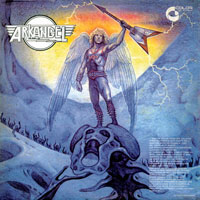 S/t (1981) – Arkangel's self titled album has strong hard rock residue with a raw edge. It's a great album that fans of Spanish bands like Barón Rojo and Obús are bound to enjoy. This album is not to be missed.
S/t (1981) – Arkangel's self titled album has strong hard rock residue with a raw edge. It's a great album that fans of Spanish bands like Barón Rojo and Obús are bound to enjoy. This album is not to be missed. - Rock Nacional (1982) – A testament to how well received heavy music was from the beginning, about half the songs on this album were recorded live in front of cheering crowds.
- Represión Latinoamericana (1983) – The band turned to heavy use of keyboards on this album. It's a shame that when people think of Latin American anthems, they go for vapid reaggeton songs rather than this powerful reflection on the Cold War in Latin America. The political situation of the region is elegantly represented by numerous lines throughout the song, such as "Coward leaders at the service of global powers. Poor nations that spent it all on deadly weapons."
Paul Gillman
After leaving his vocal duties in Arkangel, Paul Gillman formed his own solo band. A controversial figure, he's been criticized for siding with the Chavez and Maduro regimes. In 2017, he was banned from playing at Colombia's renowned Rock en el Parque Festival for his political views.
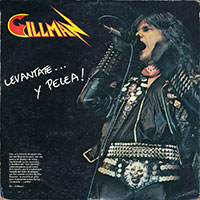 The Latin American hymn, Represión Latinoamericana, originally written with Arkangel, has been re-recorded a few times by Paul Gillman. A particular addition to a 1991 rehearsal edition makes this re-recording stand out. Gillman breaks out into a spoken-word segment:
The Latin American hymn, Represión Latinoamericana, originally written with Arkangel, has been re-recorded a few times by Paul Gillman. A particular addition to a 1991 rehearsal edition makes this re-recording stand out. Gillman breaks out into a spoken-word segment:
In some part of South America, or Central America, a young person like you - a young person like me - is dragged from a movie theater; or from his living room; or from his school. Armed men take him in a car without plates to his final destination: some empty lot at the outskirts of the city. Here they condemn him to death for believing in peace, in freedom, and above all else, for being against the repressive methods of the government.
These aren't fantasy lyrics written for an edgy metal song - this is one of many realities people in Latin America have had to face for decades.
- Levántate y Pelea (1984) - The lyrics to opening track "Corazón de Rock Pesado", dealing with perseverance and the power of metal, are truly inspiring.
Grand Bite
Formed in 1980, Grand Bite has been playing hard for four decades. Their style is pretty similar to the rest of their countrymen featuring mid-paced, hard-rock infused songs with passionate vocals front and center.
- Al Borde del Precipicio (1985) is the band's debut album and their strongest effort. If you've enjoyed the other Venezuelan bands so far, you're likely to like this one as well.
Haz
This band was an obscure and theatrical act that debuted in the early 1980s with their album Hechiceros. Just like their countrymen, Haz had a strong Hard Rock influence. In some songs they made heavy use of the keytar somewhat reminiscent of 70s Progressive/Space Rock. Rather than recommending the entire album, some of the better tracks are Rompe tus Cadenas, Gente Diferente, and Himno para los héroes de siempre. They went on to release one more album in 1988 before vanishing completely. Both their albums seem to have been released independently by the band. Only one member seems to have continued in the metal scene, albeit briefly. Here is an odd live playing of a song on local TV, with the members fully sporting the Judas Priest -look.
Fahrenheit
Yet another hard rock-sounding band with a debut album in 1983 (their sole release). Unlike Haz, however, they were more in line with the other Venezuelan bands in having a clearly recognizable heavy metal edge. While the music is good on its own, the standout element here is the female vocalist Janet Goitia. It was rare enough to find women in traditional metal around the world back in 1983, but more so in Latin America. Just like Haz, the band seems to have vanished completely. Although not an essential release, this is definitely worth checking out for some hard-hitting heavy riffs, nice vocal melodies, and cool lyrics.
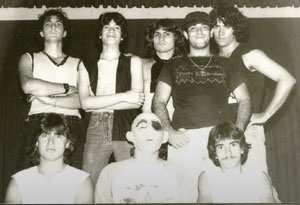 Dr. Jekyll
Dr. Jekyll
A high quality band which is nearly impossible to find any information on, it has at least two songs dating back to 1982. For more fist-pumping, high-energy music in the style of Arkangel and Resistencia 's first album, check out the song Atila, which was featured on the Venerock compilation LP from 1982..
Expresión
Perhaps an even more obscure, early Venezuelan HM act was Expresión. Like Dr. Jekyll they were also featured on the Venerock compilation, performing the song Señal de Caída. While a bit more amateurish than their contemporary countrymen, they still had a cool sound and we'd love to learn more about them in the future. (DaN)
Colombia
Kraken
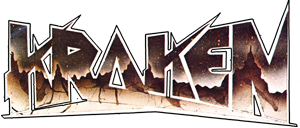 Kraken are not only Colombia's premiere classic metal band, but they are one of the biggest in all of Latin America. They originally formed in 1984 and immediately gripped the region with their gritty and spirited take on heavy metal.
Kraken are not only Colombia's premiere classic metal band, but they are one of the biggest in all of Latin America. They originally formed in 1984 and immediately gripped the region with their gritty and spirited take on heavy metal.
Scythian 's guitarist, Alex de Moller, wrote this excellent article in Vice Noisy a couple of years ago touching upon Kraken and the Colombian scene. A primer unto itself, this write-up is a wonderful overview of the social and musical situation in Medellín, Colombia during the 80s. There isn't much to add that hasn't already been said by Alex here, but Kraken are titanic force in the Latin American scene that are still active to this day.
I want to stress this part from the linked article: "However 'evil' the pioneers of Norwegian black metal claimed to be, they were ultimately just middle-class teens lighting fires in a Scandinavian utopia. Their so-called evil paled in comparison with the everyday realities of Colombia, which produced a sound and lyrical approach that couldn't be faked or imagined." It's important for some bands and fans not to get lost with their first-world privileges. Kraken wrote their excellent and inspired brand of heavy metal in the face of sociopolitical struggle.
- Kraken (1987)
Carbure
Also hailing from Medellin, this lesser-known band actually predated Kraken by a few years as one of the very first bands from Colombia. Their first release, a self titled EP, dates from 1983 and they're still active today having reformed in 2016. This NWOBHM inspired band is nothing outstanding, but they sure as hell don't slouch either. The vocals in particular are a highlight.
Kocoa
This band might be "The Holy Grail of Colombian Metal." Lost in time and unrecognized by most, Peter Schroeder formed the band in 1977 and is responsible for the first heavy metal recordings in Colombia. While their first single had a classic rock & roll sound, the band went on to record around seven additional songs between 1981 - 1984 that fully embraced the heavy metal sound of bands like Judas Priest and Scorpions. Like Carbure, Kocoa needs to be mentioned when discussing the origins of metal in Colombia, even if Kraken gets all the spotlight.
Ecuador
Ecuador saw a return to democracy in the 1980s after nearly a decade of military rule.
Spectrum
Spectrum originally formed in 1981 and, after going through a number of different name changes and periods of inactivity, are still active today. The band toiled away in their early years and only managed to release a handful of singles in the 80s under the name Spectrum Line. This pair of singles features short, but high-energy tracks filled to the brim with a punk like demeanor reminiscent of Motörhead. They wouldn't release their debut album, A las puertas del delirio, until 2005, but despite being a good album in its own right, it loses the aggression and grit of their singles.
- Religiones en Conflicto (1985) – Punchy and dirty with a whole lot of attitude. Youtube says this is from 1983, but MA says it's from 1985. Either way, this punky Tank/Motörhead like single is one of Ecuador's first contributions to the metal world.
Mozarella
Active in 1984, Mozarella might be the earliest hard rock/heavy metal hybrid from Ecuador. Fully fleshed-out metal bands didn't seem to appear in the country until 1985.
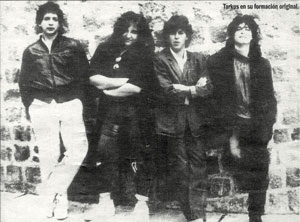 Tarkus
Tarkus
These guys were a one-demo band formed around 1985. There is very little information about them other than they were active until the late 80s, were influenced by Barón Rojo, and appear to have been well received. It's not hard to see why. The few live recordings you can find online of their demo songs are good. They didn't break any new ground, but their music is solid in all aspects.
Right, Abraxas and Blaze
Other Ecuadorian contemporaries to Tarkus worth mentioning are Right, Abraxas, and Blaze. Abraxas is particularly interesting for their darker aesthetics. Check out their song No Más Presión. Blaze released a thrashy heavy metal EP in 1985 titled No Podrás con Él but later added groove and speed metal influences to their sound.
Bolivia
Stratus
Stratus were a locally successful band formed in 1982. Their only release is a short eight minute, hard rock inspired single titled Sígueme that they put out in 1985. Its vibrant cover is a throwback to the colorful rock album covers of the 60s and 70s. This laid back single won't change your life, but it's very fun and there are some pretty sweet bass lines here. Apparently, some Bolivian fans nowadays regard this band as ripping off melodies from foreign bands.
Trilogía
Trilogía are another band that formed in 1982. The band released a lone self titled demo, but it's difficult to tell the exact year it was released due to lack of information. Metal Archives lists it as 1985, but upload sources on YouTube cite as early as 1983. Either way, this release differentiates itself a bit from the rest of the bands here. Trilogía were a six piece outfit and one of the very few bands to have a full time keyboard player as part of their line up. As a result, the songs feature a constant keyboard accompaniment and we end up with a melodic, Glam-like sound. Members of the band would continue to play in hard rock and heavy metal bands later in the 80s and 90s.
Trueno Azul
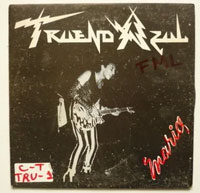 This band sounds like a grittier, Spanish-speaking version of Heavy Load with falsetto vocals and lo-fi production. The band's only output unfortunately was a short 11 minute EP titled Mario in honor of a deceased band member. However, even with such a short release, this is still perhaps the best early metal from Bolivia. It's catchy as hell and definitely one you'll want to revisit. The band embraced the theatrics and darkness of heavy metal as opposed to the party and sex aspects of rock & roll like the band Stratus. Paraphrasing bassist José Luis Morales, at that time people in Bolivia got into rock bands to "hook-up with girls", but Trueno Azul were in it for the music and ideology. While some of the more successful bands were partying and enjoying their recognition, these guys were toying with inverted crosses and honing their music skills until the death of lead guitarist Mario Ibáñez.
This band sounds like a grittier, Spanish-speaking version of Heavy Load with falsetto vocals and lo-fi production. The band's only output unfortunately was a short 11 minute EP titled Mario in honor of a deceased band member. However, even with such a short release, this is still perhaps the best early metal from Bolivia. It's catchy as hell and definitely one you'll want to revisit. The band embraced the theatrics and darkness of heavy metal as opposed to the party and sex aspects of rock & roll like the band Stratus. Paraphrasing bassist José Luis Morales, at that time people in Bolivia got into rock bands to "hook-up with girls", but Trueno Azul were in it for the music and ideology. While some of the more successful bands were partying and enjoying their recognition, these guys were toying with inverted crosses and honing their music skills until the death of lead guitarist Mario Ibáñez.
Paraguay
Paraguay is sort of a black sheep in South America. It has a particularly isolated and brutal history even by Latin American standards.
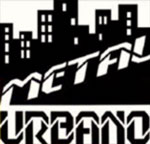 Metal Urbano
Metal Urbano
It's the "band for savages, who only play Rock & Roll." Metal Urbano are a pioneering metal band revered by Paraguayan fans to this day. The earliest Traditional Heavy Metal recording I could find was this latter day compilation including their earliest recordings from 1986.
Nash
Predating Metal Urbano by a few years, some might say that Nash inhabits those murky waters between hard rock and early heavy metal. They were originally active between 1984 and 1986. Nonetheless, they are still active today and fully embrace themselves as the first heavy metal band from Paraguay.
Peru
Peru had a pretty unique psychedelic and garage rock scene in the 70s which is being rediscovered by the internet in recent years. For an overview on the history of Peruvian metal and its socio-political context, you can read an article written by Andres "MetalizeR" Vargas, also featured at The Corroseum [Extensive band-guide also included! /aDmiN]
Tarkus
Releasing their Black Sabbath and psychedelic rock-inspired debut in 1972, this might be the first heavy metal full-length in all of Latin America. They broke up in the same year but reformed in the 2000s and later changed their name to Tlön. Their self-titled debut is highly recommended not just for historical purposes but also for fans of the early Black Sabbath sound.
Óxido
 Óxido are a high energy, NWOBHM-inspired band that sprung up in Perú in 1982 and remained active until 1985. During their brief initial lifespan as a band, they only released a singular demo in 1983 that's virtually impossible to track down. The band reformed in 2012 however and re-recorded many of their classic tunes with as much passion as their early days. Óxido more recently released a full length album in 2018 titled Oxido I that features almost the entirety of their original material re-recorded with a couple of extra songs.
Óxido are a high energy, NWOBHM-inspired band that sprung up in Perú in 1982 and remained active until 1985. During their brief initial lifespan as a band, they only released a singular demo in 1983 that's virtually impossible to track down. The band reformed in 2012 however and re-recorded many of their classic tunes with as much passion as their early days. Óxido more recently released a full length album in 2018 titled Oxido I that features almost the entirety of their original material re-recorded with a couple of extra songs.
Up Lapsus, OverKill and Pax
All three of these bands are definitely worth investigating even if there's not much information out there (yet).
Up Lapsus had at least two great singles from 1981. Aside from the stand-alone good music, interesting bits about this band are the Uriah Heep influence, their lyrics, and their success within the working class neighborhoods of Lima. Further details about this cool band can be found here.
OverKill released at least one song in 1984 titled La Cruz. This excellent track is as heavy and aggressive as traditional metal can get. They seem to have reformed for some reunion shows back in 2011.
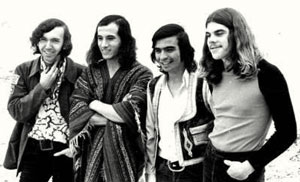 For the last and earliest of the three, we have Pax. Dating back to the early 1970s as a hard rock band, Pax are a cornerstone of Peruvian heavy metal along with Tarkus. To avoid problems with the military and government authorities, they would organize clandestine concerts and record underground music. This band is worth checking out for their historical importance alone, but their relative high quality and their charming 1985 video for the song Exterminio are worth your time as well. Their sound on this song is akin to Judas Priest 's Killing Machine.
For the last and earliest of the three, we have Pax. Dating back to the early 1970s as a hard rock band, Pax are a cornerstone of Peruvian heavy metal along with Tarkus. To avoid problems with the military and government authorities, they would organize clandestine concerts and record underground music. This band is worth checking out for their historical importance alone, but their relative high quality and their charming 1985 video for the song Exterminio are worth your time as well. Their sound on this song is akin to Judas Priest 's Killing Machine.
Brazil
Brazil is a giant that has always been prolific in the metal world. You probably know of the legendary extreme metal bands like Sepultura and Sarcófago, but here are the ones that predated them. They all play raw, messy, and lo-fi traditional/speed. If the Warfare Noise LPs had a heavy metal side to them, several bands from this list could fit the bill.
Stress
Formed all the way back in 1977, Stress are one of the oldest metal bands from Latin America. Their early years were not unlike those of Sarcófago in terms of dealing with scarce resources, little support, and general opposition from society.
- Stress (1982) – Stress's debut album is messy and aggressive; they claim their s/t to be the first true thrash album, predating Kill 'Em All by a year. If you can get past the low budget lo-fi approach, you'll find interesting stuff here.
- Flor Atomica (1985) – Three years after their seminal debut album, Stress released a follow up with Flor Atomica. This album expanded upon the ideas on the debut and displayed a matured band, as a result the execution is tighter and it stands a bit above their self titled.
Vulcano
Yes, that Vulcano! This band is a staple in Brazil's extreme metal scene, but before they went in that direction they played traditional metal. They released a single EP in this style when they started out before moving in the more extreme direction. Om Pushne Namah isn't an amazing release, but it isn't nearly as poor as those reviews on websites like Metal Archives might lead you to believe. This is an interesting tidbit in both the band's career and for very early Brazilian metal.
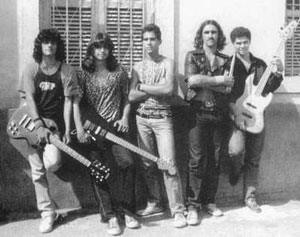 Excalibur
Excalibur
Excalibur are yet another one-demo band (with a rather unoriginal name!). Their lone demo however is over half an hour long and can be taken as a low budget album. The 1984 demo is similar to early NWOBHM bands such as Tygers of Pan Tang and Diamond Head with a little bit of Thin Lizzy thrown in. The art, featuring Merlin of course, is also fantastic for a demo like release.
Azul Limão
Originally formed in 1981, these artists released three demos up to 1984, which were later compiled in 2001, before arriving at their 1986 debut album Vinganca. Their sound gradually evolved from laid back, hard rock inspired metal and became more and more aggressive. By the time they arrived at the debut, they were playing aggressive and fast speed metal that brings to mind bands like Agent Steel.
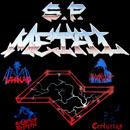 S.P. Metal split (1984)
S.P. Metal split (1984)
Material from four bands: Salário Mínimo, Vírus, Centúrias, and Avenger. This is an interesting release early on in Brazil's metal history. The music varies from mid-paced anthems to upbeat, melodic NWOBHM-like bangers. Two of these bands, Vírus and Avenger, would unfortunately only release material for this split. It's worth nothing that Centúrias had previously released a demo in 1983. (An equally great Vol. II was incidently released in 1985)
Dorsal Atlântica
Like Vulcano, this band is better known for their extreme metal releases later in the 80s. Their 1982 demo is however good traditional metal power fitting right in with this list, and their "Ultimatum" split LP debut from '84/85 sound a lot more like the earliest German power/speed bands like Tyrant or Living Death than the Thrash of their "Antes Do Fim" debut LP from a year or 2 later.
Karisma
They are here to fuck your ears! Opting to sing in English, this band released a full-length in 1983. This good album fits right in with all the NWOBHM craze of the period. Unfortunately, this seems to be the only release the band ever did. Thankfully, it’s been revived as a re-issue thanks to a local Brazilian label, Classic Metal, specializing in (you guessed it) classic heavy metal.
Argentina
Possibly the best documented scene on this list; Argentine fans are well aware of their Metal history. Just like with Venezuela, it's worth mentioning the label Umbral Discos & Cintas, which released most of the early Argentinian heavy metal music from the bands that you'll read about below.
Riff
Riff are the originators of Argentinian metal. Founder and vocalist Pappo was a rock music veteran by the time he formed Riff in 1979, having participated in other bands since the early 70s. Living up to his rocker image, he unfortunately died in a road accident while driving a Harley Davidson in 2005. Riff became a big hit in their country and its neighbors, and the conservative circles jumped right ahead to hating the "long haired street thugs clad in black leather".
Riff has even more of a hard rock sound than early Arkangel. The band pretty much sounds like AC/DC and Saxon worship with a heavy dose of blues.
- Ruedas de Metal (1981)
- Macadam 3,2,1,0… (1981)
- Contenidos (1982)
V8
"Enough with the hippies, enough with the begging – it's time for Metal!" The hypocritical power structures which terrorized its population just years before during the so-called Dirty War would condemn the hard rock/heavy metal crowd, particularly V8, as dangerous and unruly. Despised by the local music business for their attitude and Motörhead -induced sound (which they barely considered music), the band saw themselves as more comrades with the punks and were nearly jailed due to some issues with a studio. V8 aptly titled their first album Luchado por el Metal or "Fighting for Metal", for which we have titled this primer.
There's even a whole book written on the band which you can read here if you are interested in learning more background. Members of the band went on to form other renowned projects like Hermética and Horcas.
- Luchando por el Metal (1983) – A Speed Metal classic, it bears resemblance to Motörhead and even Venom with how aggressive and dirty it sounds.
- Un Paso Más en la Batalla (1985) – Continuing the style of the debut, but further refining it, Un Paso expands on what Luchando did. The end result is an even tighter and more enjoyable release.
Bloke
A cult and sadly overlooked band, Bloke only recorded one album on Umbral Discos & Cintas before quitting in the early 80s. Unlike V8, this band was more melodic and in line with Iron Maiden and 80s Judas Priest. The most memorable song, in my opinion, is "Bajo el Signo del Terror." The lyrics are an impressively well-written, anthemic condemnation of the Argentinian's military crimes against its own population. So many bands sing about being "Under the sign of [something]" but these guys truly lived "Under the Sign of Terror".
- Demolición (1984)
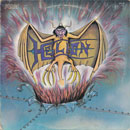 Hellion
Hellion
Hellion is yet another speed metal band like V8. I don't know why this style got so popular early on in Argentina, but I'm definitely not complaining. Supposedly Hellion released an independent demo in 1982 just like V8, making them one of the earliest metal bands from Argentina. Their self-titled debut album came out in 1984 and fits in nicely with Bloke and V8 despite not being on Umbral Discos & Cintas.
- Hellion (1984)
Thor
With Thor we have more of the mid paced, hard rock influenced heavy metal that was popular in Latin America. They released two independent cassettes in 1983 and are notable for having evil, Satanic lyrics before their peers were readily adopting them. Thor's story is a bit of a peculiar one. The band's debut album, El Pacto, was released in 1985 also under Umbral Discos & Cintas.
- El Pacto (1984)
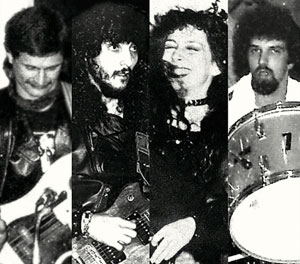 Super Ratón
Super Ratón
A recently revived rarity, this was among the first mixed-gender bands in Latin America along with Fahrenheit. Their lyrics take such a sharp stab at the core of Argentine society that the label refused to release their 1984 debut album, Sociedad Occidental. This excellent material wouldn't see the light of day until 2016. Fans of Raven, Acid and Rock Goddess are guaranteed to like this band which has a sound very much of its own. This is in part due to the powerful tenor vocals of the singer.
Rata Blanca
One of the well known metal band from Latin America. Rata Blanca released their first demo in 1985.
Chile
Chile was under an internationally infamous dictatorship during the entirety of the 1980s just like Argentina. There were numerous rock bands which toyed the line between hard rock and heavy metal around Chile since the 70s. Some names include Amapola, Poozitunga, and Tumulto.
Infierno Rock Compilation (1987)
A split compilation of several bands. The earliest recordings are from the bands Feedback and Chronos in 1983 – 1984. Dorso would go on to release a demo in 1985. Members of Feedback would go on to play in another Metal band called Turbo which formed in 1983 and released its debut in 1987.
Rock Duro y Pesado Compilation (1985)
Another multiple artist compilation, this time all from 1985: Ekkos, Electroshock, Panchorreta, and Armamento. The only band that would eventually go on to release material of their own beyond this split was Ekkos, who put out a pair of albums titled La Maquinaria and La despedida in 1986 and 1990 respectively.
Uruguay
Uruguay is one of the most stable countries in Latin America. Even so, they were still under military rule and suffered the consequences of US intervention. As a result, bands there shared some similar struggles as their Latin American peers.
Crisol
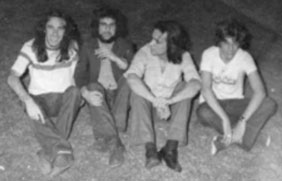 These pioneers started out already back in 1977 as a jazz/prog rock band, performing several shows in this style in the late 70's and early 80's. By 1983-84 they had moved toward a heavier Hard Rock/early HM sound and their very first studio session can be heard on the "Rock Nacional vol 1" compilation cassette, where the song "La Chusma" stand out as a true Hymn of early South American heavy rock. In 1985 their very rare "Mentes de Metal" EP was released, and while it doesn't contain the same brutal Metal attack as followers like Acido, Cross or Alvacast, it is yet another great example of first-wave Latin American HR/HM. Sadly the band broke up shortly after the EP's release. (DaN)
These pioneers started out already back in 1977 as a jazz/prog rock band, performing several shows in this style in the late 70's and early 80's. By 1983-84 they had moved toward a heavier Hard Rock/early HM sound and their very first studio session can be heard on the "Rock Nacional vol 1" compilation cassette, where the song "La Chusma" stand out as a true Hymn of early South American heavy rock. In 1985 their very rare "Mentes de Metal" EP was released, and while it doesn't contain the same brutal Metal attack as followers like Acido, Cross or Alvacast, it is yet another great example of first-wave Latin American HR/HM. Sadly the band broke up shortly after the EP's release. (DaN)
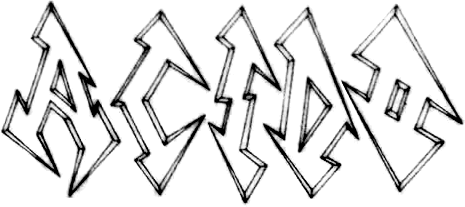 Ácido
Ácido
Their first release is a self-titled EP from 1986. They recorded additional songs such as Por Siempre Heavy Metal which are due for an official release at some point. Inspired by Argentinians Riff and the likes of AC/DC and Mötorhead, their first EP has a distinct charm due to its dirty and anthemic sound. The band is still active and have been going stronger than ever since the early 2010s.
Don't miss our interview with Ácido guitarist/vocalist Juan Acuña "El Perro"!
Graf Spee
Better known as a death metal band, these guys started out playing traditional heavy metal and released their first such demo in 1985. While Argentinians Riff were the seminal influence on Uruguayans Ácido, Argentinians V8 were the seminal influence on Graf Spee's first recorded demos. With the viciousness of these two demos, it's easy to see how this band later turned to extreme metal.
Cross
Forming in 1984 and releasing a demo titled Ivanhoe in 1985, Cross would go on to release four albums in the 90s, adopting a somewhat punk/garage aesthetic that's kind of hard to pin-down. Due to their raw sound, rough attitude, and their social commentary at the tail-end of Uruguay's military dictatorship, Cross had a difficult time getting signed to a label and didn't release their debut album until 1991.
Mexico
Aside from Brazil, Mexico is the most populous country in Latin America and combined with its relative proximity to the USA, a hotbed of heavy metal activity, the country has a strong traditional metal scene. Like in Chile, Mexico had a wealth of hard rock bands which toyed the line between rock and heavy metal in the early 80s. Some highlights include Red Sky, Fongus and Zebra. The most active of these, Fongus, recorded three full-length albums by 1983 and discarded the blues rock influenced-sound in favor of very fast and aggressive heavy metal with their 1989 album Sobredosis de Metal.
Crazy Lazy
Formed in the late 70s, their first release was their debut album from 1985. Boasting an excellent cover art which might as well be at home with First Wave black metal releases, the music is a good mix of 70s and early 80s heavy metal.
Nox Kruent
These Mexicans changed their name to Khafra in 1985 and have been quite active since. Their first release, a demo from 1984, can once again be described as nothing groundbreaking but absolutely solid. Comprising five tracks, these songs took big cues from the melancholic feel of certain NWOBHM bands (think Iron Maiden 's Hallowed Be Thy Name).
Cristal y Acero
They are a well regarded band which is still active today. They play a mix of hard rock, classic heavy metal, and early power metal. The band debuted in 1984 with their self titled album, but they are best known for their album Kuman, which formed the basis of a Fantasy Rock Opera.
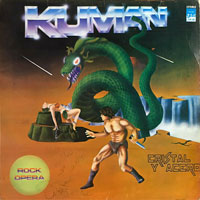 Kuman (1984) – There's something interesting here that makes this particular release stand out compared to the rest of the primer. It's a Fantasy/Sci-Fi Rock Opera with a Tarzan-like story and geared towards a younger crowd. I can't tell if it's the bands own creation or an adaptation, but it was a huge hit back in the day and it's still hailed as a classic in Mexican Rock. They may have had the biggest outreach out of all these bands due to this performance.
Kuman (1984) – There's something interesting here that makes this particular release stand out compared to the rest of the primer. It's a Fantasy/Sci-Fi Rock Opera with a Tarzan-like story and geared towards a younger crowd. I can't tell if it's the bands own creation or an adaptation, but it was a huge hit back in the day and it's still hailed as a classic in Mexican Rock. They may have had the biggest outreach out of all these bands due to this performance.- Cristal y Acero (1984) – Their self-titled follow-up to Kuman was far less dramatic. It's a more traditional Hard/Heavy album, a bit mellow and upbeat but also quite NWOBHM-sounding in several places.
- Espadas de Acero (1986) – Their third album presented a similar style to the s/t LP, but still great. Don't let the third rate tattoo parlor aesthetics fool you, Espadas is an upbeat classic metal album with plenty of good riffs.
Luzbel
Along with Cristal y Acero, Luzbel is probably the most known and best regarded 80s Metal Mexican band. Formed by guitarist Raúl Fernández Greñas, Luzbel grew to be one of the regions most influential bands. Raúl himself spent some time in the UK during the NWOBHM and even tried his hand at success there with the band Red, who only released one demo in 1981 before dissolving. Despite the lack of success in the UK, Raúl returned to his native Mexico with fresh ideas and Luzbel became a driving force in the country's metal scene.
- Metal Caído del Cielo (1985) - Representing the rebirth of Luzbel with a new vocalist, this EP is an excellent offering that shines as one of the best from Latin America. Its dark and foreboding cover accentuates the passionate and epic vocal performance found here. Each of the four tracks presents a different lyrical theme and slightly different style, ranging from the religious, doomy, and epic to the more carefree, blues-rock influenced, but it doesn't sound disjointed at all. The variety here is incredible. Despite being under 18 minutes long, this ambitious Metal Caído del Cielo is one of the best releases to come out of Latin America. Essential. (Marco/Ride Into Glory)
- Pasaporte al Infierno (1986) – Pasaporte al Ifierno is the successful follow up to Luzbel's seminal Metal Caído del Cielo EP. Relative to its predecessor, this one picks up the pace and follows a more aggressive speed metal oriented mold.
Ramses
Ramses formed as early as 1980, but wouldn't release their debut album titled Apocalipsis until 1985. Their debut was a rough around the edges and amateurish take on hard rock infused heavy metal. It wouldn't be much later until 1988 where the band would eventually find their groove with Guerroros del Metal. Clearly inspired by the early German speed power metal scene and American power metal, Guerreros sounds like a cross between Agent Steel and Helloween. It shows a band that was clearly able to grow and adapt new sounds to reach a height that they previously couldn't.
Costa Rica
Internationally renowned for its nature and peaceful efforts, it's been said the distance between Costa Rica and the rest of Central America is measured in decades, not in kilometers. This is because Costa Rica is in so many ways ahead of its dysfunctional, violent brethren in the north. However, the country still has its share of poverty, underdevelopment, and crime.
When it comes to the heavy metal scene, Costa Rica fared pretty much the same as the rest of Central America - with barely any output in the 80s.
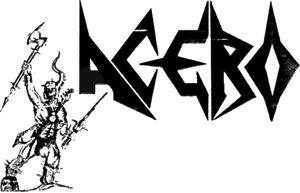 Acero
Acero
Probably the first Metal band from Costa Rica, these guys had some live appearances before debuting with a demo recording in 1988 and are still active today. While the band is influenced by the familiar, classic acts like Black Sabbath, Judas Priest, and Barón Rojo, their 1988 demo recording is so raw that it almost has a thrash metal type of attitude.
As the band itself states, "it's hard to form a Heavy Metal or Hard Rock band in these countries and even more so when you sing in Spanish… but against all adversities, we're still up in arms for you - the fans."
Dominican Republic
After a number military dictatorships and civil wars, this country started making progress in the 80s.
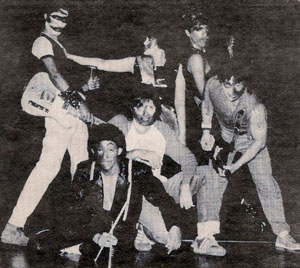 Brah-Mins
Brah-Mins
The story of "Los Brah-Mins" goes all the way back to the 60's, where the band started out as a classic beat group and were fairly popular during this period. In the early 80's the band reunited with a more up-to-date sound and a new lead guitarist, Juan José Collado, as well as a new female vocalist of Japanese origin, Mayi Padron. After a couple of singles their first and only full-length album was released in 1984, and while "Somos Rockeros" couldn't really be accused of being a proper Heavy Metal release, the inclusion of great hardrockers like "Through My Brain", "Back And Forth", "Hey, Chica Hey" etc, as well as its huge importance for the development of the Dominican rock scene, this band and album can not go unnoticed in a primer like this. (DaN)
 Cygnus
Cygnus
Formed in 1983, Cygnus is the first Dominican and first Caribbean Metal band in general.Their live shows were apparently a big hit and they made a lasting impact on the small Dominican scene. They wouldn't officially release any material until a 1988's 3 track demo, but several live, rehearsal and even TV recordings exist from earlier years, including songs like Estoy Fuera de Control and Esclavo del Vicio.
Aside from Cygnus and Brah-Mins, we can also mention the hard rock band Emphiphis.
Honduras
Somehow skipping a civil conflict unlike every single one of its neighbors, Honduras still had to suffer through the terror inflicted by the CIA-backed Battalion 3-16 during the 80s and one of the highest poverty rates in Latin America.
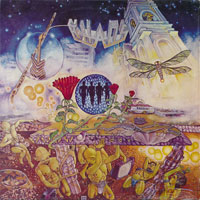 Khaos
Khaos
By 1985, the lone Salvadorean band had released two singles, while Guatemala, Nicaragua, Costa Rica, and Panama had seemingly no releases at all. These Hondurans were literally years ahead of their neighbors. With a spark of the ongoing dream for a unified Central America, their sole album, Forjado en Rocka, was recorded in El Salvador and was well received in both Guatemala and Nicaragua. Musically, it's a solid effort that sounds like Arkangel's first album but with lower production values. Like so many in Central America during the 80s, some members had to leave their native Honduras for fear of their own safety at the hands of the government.
Don't miss our interview with Khaos guitarist Max Urso!
Guatemala
Unlike the 70s hard rock scene, which was a working class thing, metal in Guatemala came from the better-off middle class. Drummer and singer 'Blacko' González (nicknamed thus because of his love of Venom and First Wave black metal) almost single-handedly started the metal scene by importing international music and airing it on his radio show.
The unique band Cuerpo y Alma had already laid the foundations for heavy metal with their Black Sabbath and Guatemalan-folk marimba mix as far back as '71 – '73, but their legacy remains more obscure than Blacko's. Cuerpo y Alma's story is a classic tale of 'Sex, Drugs, and Rock & Roll' with a twist - it's set in a poor country ruled by a dictatorship amidst a civil war. The band's venue was raided by police forces, and founder Maco Luna was beaten and imprisoned for a few weeks.
Sangre Humana
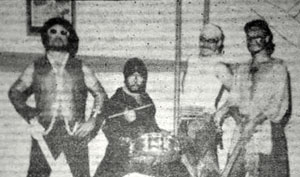 Blacko's first band, they considered themselves black metal because of their dark sound and Satanic themes. While Blacko left the Satanic aesthetics and founded another band, Guerreros del Metal, Guitarist Charly Velásquez would go on to form the much superior and wonderful Serpiente Vision with other scene veterans.
Blacko's first band, they considered themselves black metal because of their dark sound and Satanic themes. While Blacko left the Satanic aesthetics and founded another band, Guerreros del Metal, Guitarist Charly Velásquez would go on to form the much superior and wonderful Serpiente Vision with other scene veterans.
- Visión Satánica EP (1987) – Similar to Venom but with a hard rock, bluesy sound instead of a punk one. It might sound better on paper than it actually is, but check it out if you like lo-fi rarities.
Serpiente Visión
I just want to shoehorn this band in here because they're my personal favorite from the entirety of Central America, Mexico, and the Caribbean. Formed by scene veterans, their only recording didn't come out until 1995 and, in my opinion, has a totally unique sound. The album is a great mix of 70s hard rock and metal from the likes of Scorpions, early Accept, and Led Zeppelin but with a very distinct and original character. While they toyed with the image of Mayan mythology, their music doesn't reflect that.
El Salvador
Another country with a particularly brutal history even by Latin American standards, the 1980s were an especially cruel time due to the Salvadorian civil war.
Broncco
Broncco, also known as B'rock, starting all the way back in 1970 as a rock band named Thorns. They eventually settled on Broncco in 1974, however, it wouldn't be until 1981 that we finally got a proper release with the 7" No somos diferentes. While the debut 7" is very soft prog rock/pop, the 1985 single "Tiempo de Amanacer" could definitely be considered Hard Rock and worth checking out. Broncco's story is an inspiring one considering founding member Chente Sibrián has had polio since he was one-year old and is a self-taught guitarist. Broncco wouldn't officially release a debut album until all the way in 1996 with B'rock.
- Tiempo de Amanacer (1985) – The hard rock A side was also re-recorded in 1996.
closing words...
Unfortunately, I was unable to find bands from a few countries that fit the criteria for this writing. As mentioned in the beginning, the origins of heavy metal in Latin America are poorly documented and a lot of things are lost to time. For that reason, I thank the YouTube channels MartinPolifilo89, Gloria Al Metal, Gloria Al Metal Platino and Jaime Tapia for their work in preserving the history of Latin American traditional metal through YouTube videos. I also thank Rainer Krukenberg of the German label Metaleros dedicated to Latin American bands, Marco from the webzine Ride into Glory for editing a previous version, and Juan Carlos Mendoza of the underground Colombian radio show La Caja de Pandora and author of the book Bienvenidos al Sabbath: Crónicas, reseñas y reflexiones en torno a la vigencia del underground 2001 – 2021 for insight into the Colombian and Venezuelan scenes. Finally, thank you to Warren B. for his general knowledge and support, and DaN from the Corroseum for hosting this article and all his help. Hail The Corroseum!
For further research into the olde South/Latin American Metal scene, please check out the following internal and external links:
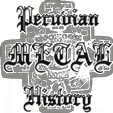
The essential guide to the Metal of Peru, spanning the 70's to the early 90's and including everything from the earliest proto-Metal bands to the first Black/Death pioneers.
The Corroseum's fanzine archive features plenty of old Latin American fanzines from the 80's and early 90's, including special selections for countries such as Argentina, Brazil, Chile, Colombia, Mexico, Paraguay and Peru..

The great HM compilations encyclopedia.of The Corroseum features dozens of Latin-American comps in its archive.
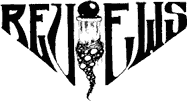
Our rare Heavy Metal reviews-archive feature pics and writings of lots of old, obscure releases from countries like Argentina, Bolivia, Brazil, Chile, Colombia, Dominican Republic, Ecuador, Guatemala, Honduras, Mexico, Peru, Puerto Rico, Uruguay and Venezuela.

The Corroseum's (and possibly the internet's) first interview with Venezuelan legends Resistencia, performed in October 2002 and October 2003.

Apart from hosting an older version of this primer, this site also hosts a Latin American Demos-special made by Xecotcovach, as well as his original Acido- and Khaos-interviews.

The fattest fanzine-blog in the world(!) is run by former Cuero Negro-editor and Peruvian national Giuseppe "Pino" Risica and includes an even larger collection of LatAm zines and mags from the 70's up until today.


























